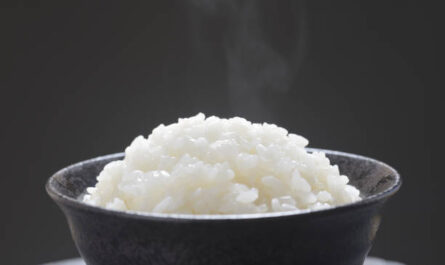Onigiri with short grain rice is a beloved staple in Japanese cuisine, cherished for its simplicity, versatility, and cultural significance. These rice balls are not only a convenient meal option but also a symbol of comfort and tradition.
In this article, we will explore the rich history of onigiri, the importance of using short grain rice, and the various ways you can enjoy these delightful rice balls.

The History of Onigiri
Onigiri, also known as omusubi, has been a part of Japanese culture for centuries. These rice balls were originally created as a portable and easy-to-eat meal for travelers and soldiers. The tradition of making onigiri dates back to the Heian period (794-1185), where they were used as offerings to the gods.
Today, onigiri is a popular snack and lunch option enjoyed by people of all ages. Its enduring popularity is a testament to its cultural significance and timeless appeal.
Why Use Short Grain Rice?
The choice of rice is crucial in making the perfect onigiri. Short grain rice, known for its sticky texture and slightly sweet flavor, is ideal for shaping rice balls. Its stickiness helps the rice hold together, making it easier to mold into various shapes.
Using short grain rice also enhances the overall taste and texture of onigiri, providing a satisfying mouthfeel with every bite.
Traditional Onigiri Fillings
Onigiri can be filled with a variety of ingredients, making it a versatile and customizable dish. Some traditional fillings include:
- Umeboshi (pickled plum)
- Salmon
- Kombu (seaweed)
- Tarako (cod roe)
These fillings not only add flavor but also provide a burst of umami, enhancing the overall eating experience.
Modern Onigiri Variations
While traditional fillings remain popular, modern variations of onigiri have emerged, catering to diverse tastes and preferences. Some contemporary fillings include:
- Tuna mayonnaise
- Spicy shrimp
- Avocado
- Kimchi
These modern twists showcase the adaptability of onigiri and its ability to evolve with changing culinary trends.
How to Make Onigiri with Short Grain Rice
Making onigiri at home is a simple and rewarding process. Here’s a step-by-step guide:
Ingredients:
- 2 cups of short grain rice
- Water for rinsing and cooking
- Salt
- Your choice of fillings
- Nori (seaweed) sheets
Instructions:
- Rinse the rice under cold water until the water runs clear.
- Cook the rice according to the package instructions.
- Once cooked, let the rice cool slightly.
- Wet your hands with water and sprinkle a little salt on them.
- Take a handful of rice and flatten it in your palm.
- Add your desired filling in the center.
- Shape the rice into a ball or triangle, encasing the filling.
- Wrap a strip of nori around the onigiri.
Enjoy your homemade onigiri as a snack or meal!
The Cultural Significance of Onigiri
Onigiri holds a special place in Japanese culture, often associated with family and tradition. It is a common item in bento boxes and is frequently made by parents for their children, symbolizing love and care.
The simplicity and versatility of onigiri make it a cherished dish that transcends generations.
Onigiri in Popular Culture
Onigiri has also made its mark in popular culture, often featured in anime, movies, and television shows. Its presence in media highlights its role as a cultural icon and a beloved food in Japan.
Health Benefits of Onigiri with Short Grain Rice
In addition to its delicious taste, onigiri offers several health benefits. The use of short grain rice provides a good source of carbohydrates, essential for energy and brain function.
Furthermore, the fillings can offer additional nutrients, such as omega-3 fatty acids from salmon or probiotics from kimchi.
Nutritional Value of Short Grain Rice
Short grain rice is rich in vitamins and minerals, including B vitamins, magnesium, and iron. It is also naturally gluten-free, making it suitable for individuals with gluten sensitivities. For more information on the nutritional aspects of sushi rice, visit gluten content.
Onigiri Around the World
While onigiri is a quintessential Japanese dish, it has gained popularity worldwide. Many international restaurants and cafes have embraced onigiri, offering unique variations that reflect local tastes and ingredients.
Onigiri in Western Cuisine
In Western countries, onigiri is often adapted to include popular local ingredients, such as cheese, bacon, or barbecue sauce. These creative adaptations demonstrate the global appeal of onigiri and its ability to transcend cultural boundaries.
Conclusion
Onigiri with short grain rice is more than just a simple rice ball; it is a symbol of tradition, versatility, and cultural significance. Whether enjoyed as a traditional snack or a modern culinary creation, onigiri continues to captivate taste buds worldwide.
For more insights into rice varieties and their uses, visit types of rice.

FAQ
What is the best rice for onigiri?
Short grain rice is the preferred choice for onigiri due to its sticky texture and sweet flavor, which help the rice balls maintain their shape.
Can I use other types of rice for onigiri?
While short grain rice is ideal, medium-grain rice can also be used. However, it may not hold together as well as short grain rice.
What are some popular onigiri fillings?
Traditional fillings include umeboshi, salmon, and kombu, while modern variations may feature tuna mayonnaise, avocado, or kimchi.
This article contains affiliate links. We may earn a commission at no extra cost to you.



